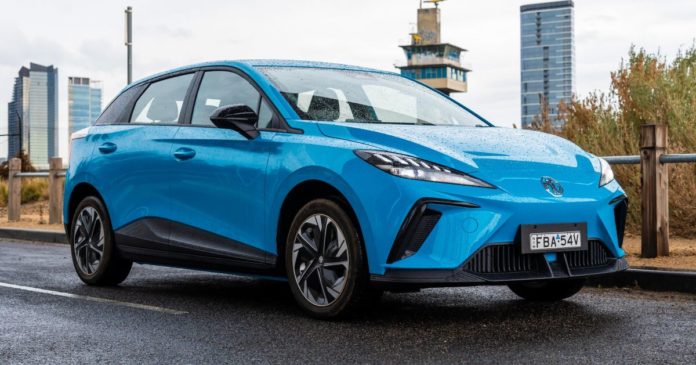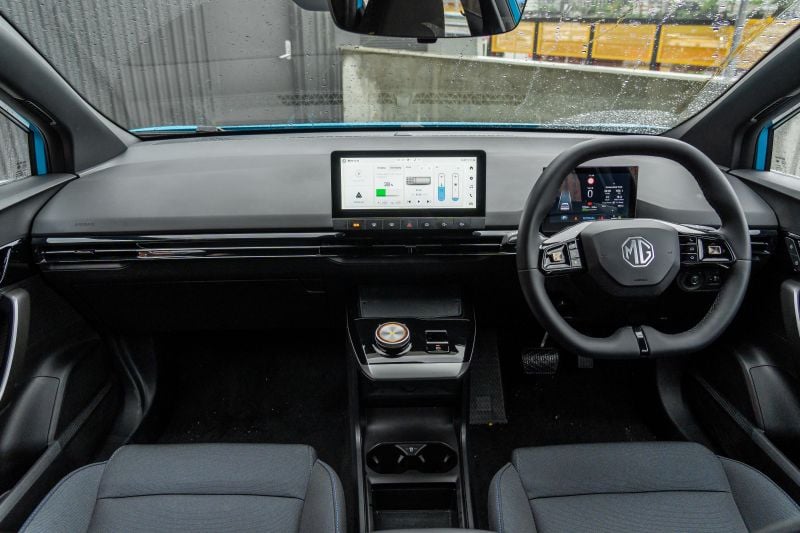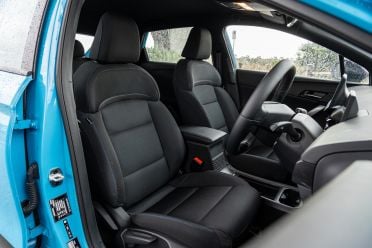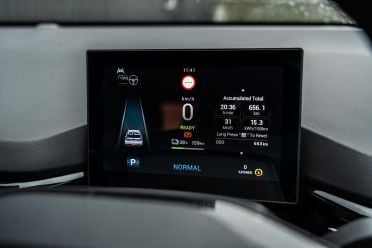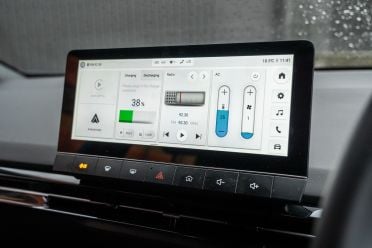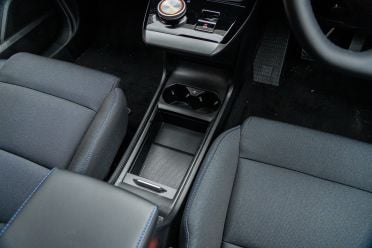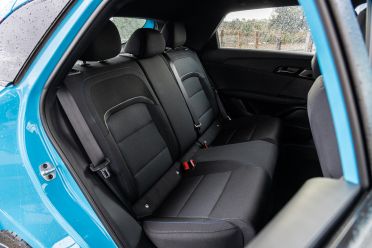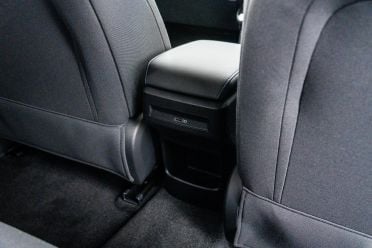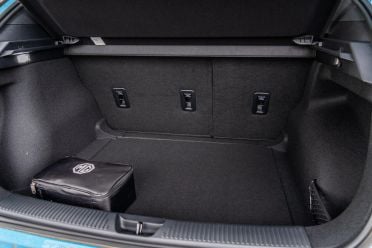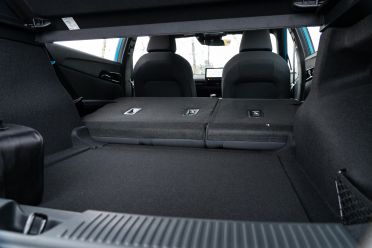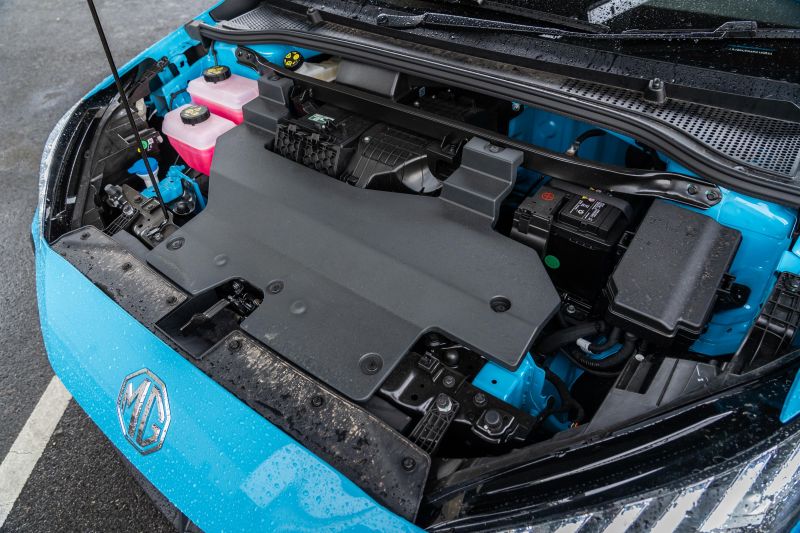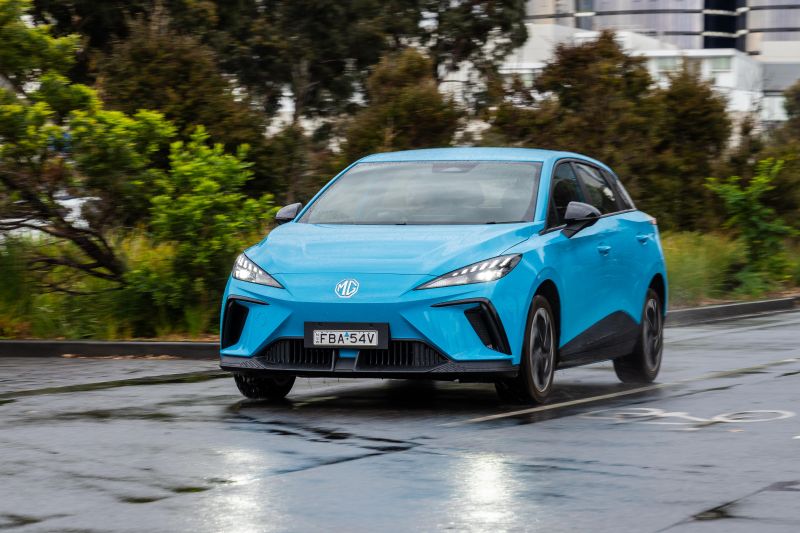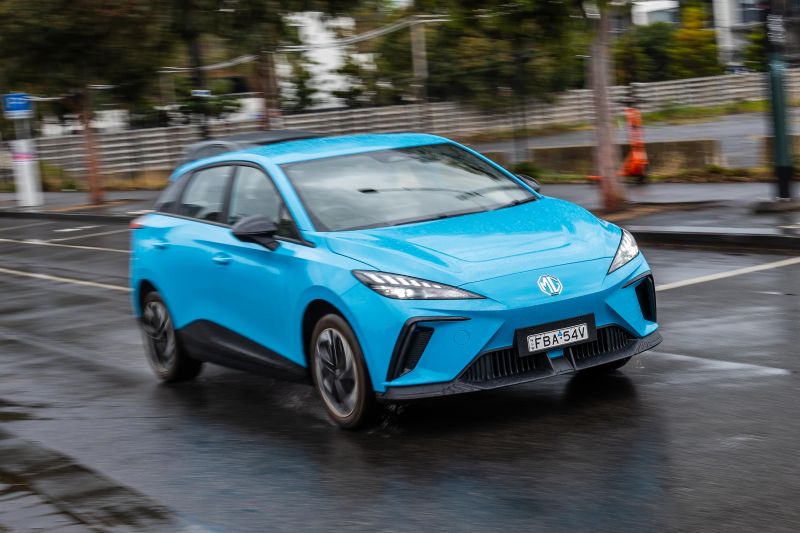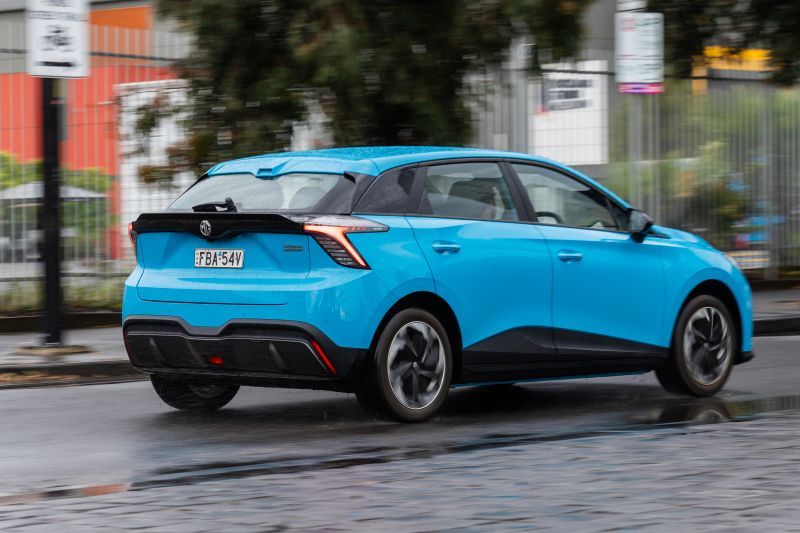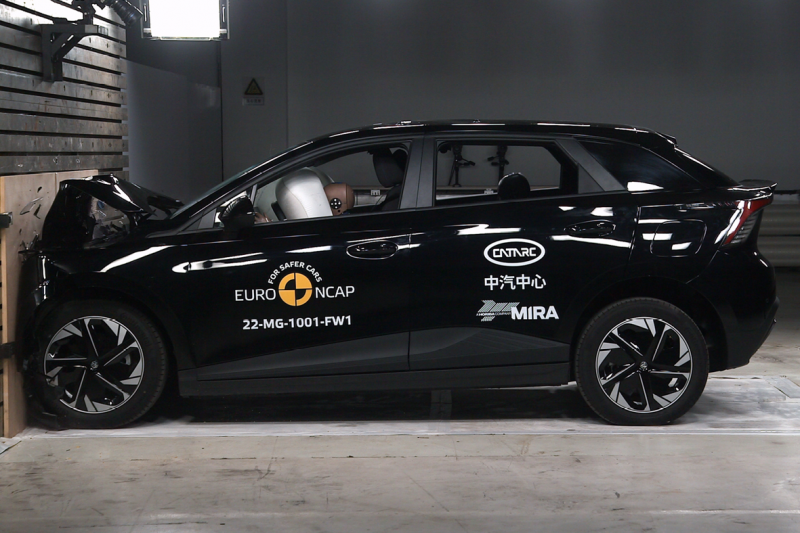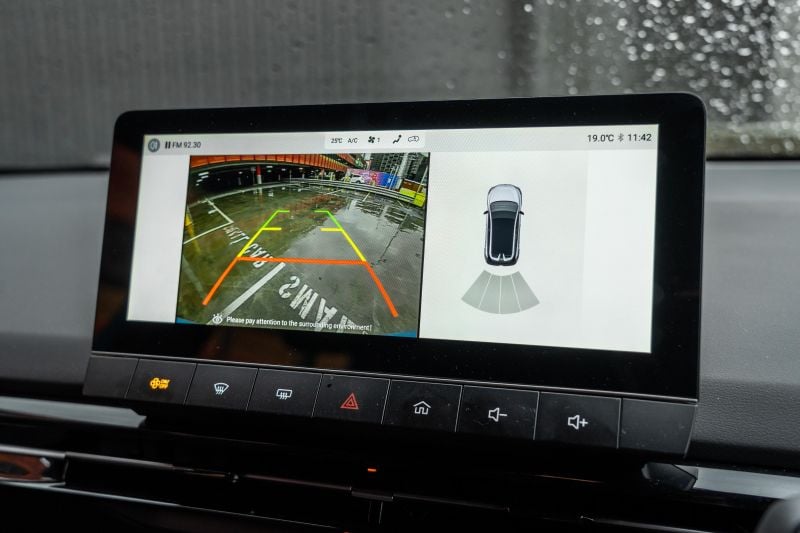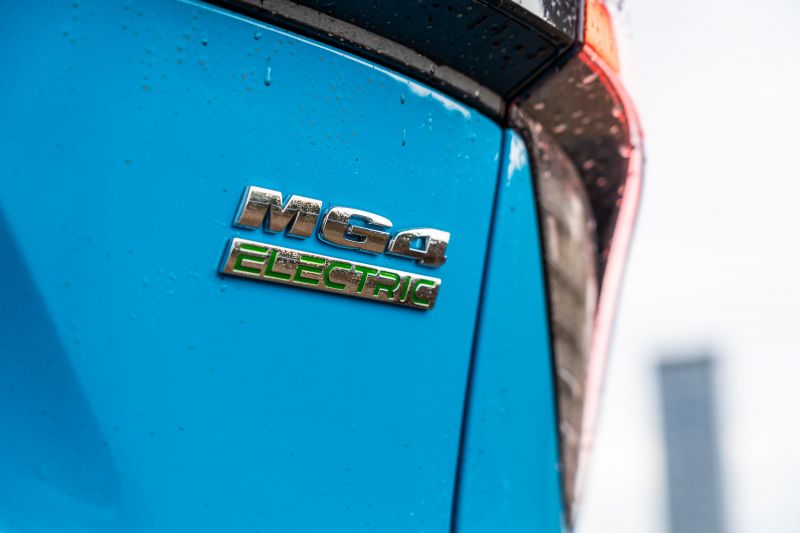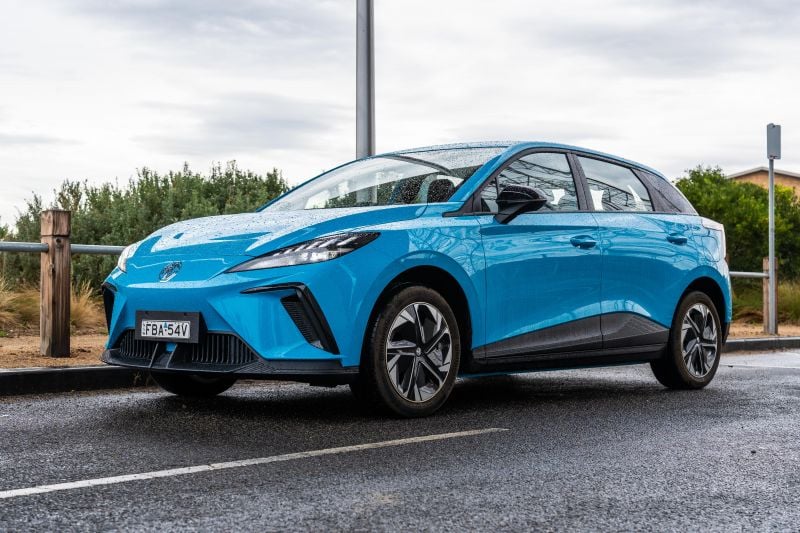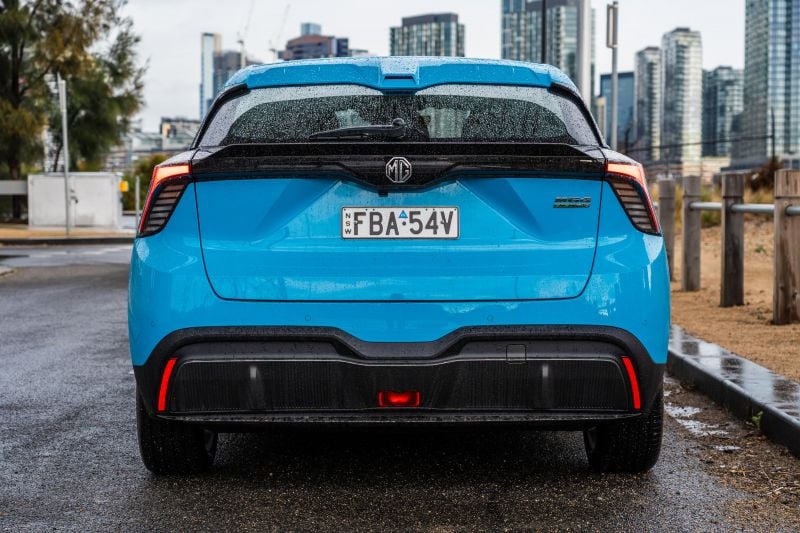Nowhere is the Chinese automotive industry’s embrace of electric vehicles (EVs) and its rapidly maturing product quality more apparent than in the small electric hatch segment, in which the MG 4 competes.
The Nissan Leaf created this segment, but the Japanese brand’s complacency allowed its pioneering hatchback to fade in relevance. More EV-focused Hyundai had a small hatch too with the Ioniq, but it came and went without making much of an impact here.
The segment; therefore, was almost dormant. Then along come three sharply priced electric hatchbacks from China, all in the space of one year.
The MG 4, BYD Dolphin and GWM Ora have come to shake up this segment, and have become Australia’s cheapest EVs in the process.
Don’t think they’re all cut from the same cloth, though.
The MG 4 is the most different of the three, with its austere interior, sharply creased styling, rear-wheel drive platform, and most dynamic chassis tuning.
The front-wheel drive BYD Dolphin offers bold colours and more standard kit but much less power in base guise, while the GWM Ora is also front-wheel drive but has polarising retro styling.
For automotive journalists at least, the MG 4 seems to be the most desirable choice. But is it the most sensible choice for the average Australian?
How does the MG4 fare vs its competitors?
View a detailed breakdown of the MG4 against similarly sized vehicles.

MG
MG4
How much does the MG 4 cost?
We’ve put the Excite 64 to the test. This is the base trim level, but with the mid-range battery, and it carries a before on-roads price of $44,990.
Based on a New South Wales postcode, you’re looking at $46,736 drive-away.
A BYD Dolphin Premium in NSW rings up at $46,023 drive-away, while a GWM Ora Extended Range is $47,044 drive-away. For context, a Nissan Leaf starts at $50,990, and that’s before on-road costs.
Similarly priced non-electric small cars include the flagship Toyota Corolla ZR Hybrid ($43,114 D/A in NSW) and Mazda 3 G25 Astina ($46,725 D/A).
The MG 4’s name is a misnomer. Even the cheapest MG 4 is more expensive than the priciest MG 5, and it’s a much more impressive vehicle overall.
What is the MG 4 like on the inside?
Much like the exterior, the MG 4’s interior takes a decidedly different direction to its fellow Chinese hatchbacks – to mixed results.
Its austere design is less polarising than the organic look of the Dolphin, and is more subdued than that of the Ora, but it’s minimalist almost to the point of being dull.
A low, flat dashboard makes the front of the cabin feel more open, as does a centre console that’s virtually at floor height. The latter boasts plenty of storage space, and there’s a covered bin, a pair of cupholders, plus a single USB-A outlet (for smartphone mirroring) and single USB-C (for charging).
A large 10.25-inch infotainment touchscreen juts out of the dashboard, while a similarly free-standing 7.0-inch digital instrument cluster sits ahead of the driver.
Air vents have the ‘hidden’ look that’s all the rage today, with gloss black trim surrounding them and running across the dashboard.
There’s not really a centre stack to speak of, with a single row of hard buttons under the touchscreen. Between this and the centre console, there’s a ledge that juts out. This contains the gear selector and park brake, as well as a shelf that in the up-spec Essence features a wireless charger.
Here’s where things get irritating. This ledge is at knee height for many drivers and is finished in hard plastic, so it gets uncomfortable if you’re the type to sit with your legs apart. MG, put some padding here.
The row of physical switches includes volume controls, but they have an unpleasant, clackety feel. Pursuing this minimalism has also seen MG move so many key functions to the touchscreen.
Cleverly; however, MG decided to make good use of steering wheel real estate and implemented a pair of squarish switches that can be moved up and down and from side to side. These can be easily programmed for different functions, including the climate control.
I programmed the left-hand switch for the climate control. Simply press the star button and then move it up and down for temperature and left and right for fan speed.
The last cars I can remember with air-conditioning controls on the wheel were some 2000s Toyota products, and it’s surprising this isn’t more common. Kudos to MG for including these; though, I should admonish the company for removing so much dashboard switchgear.
Drive mode selection, for example, is buried in the infotainment screen. The infotainment is a step up from the brand’s older systems, though it can be slow to boot up – especially noticeable as the car itself starts immediately. This also means there’s a delay with the reversing camera loading up. The camera is also quite low-res.
The instrument cluster is more impressive. It’s reminiscent of units in Volkswagen’s ID. products, as well as the Cupra Born and Ford Mustang Mach-E. It looks small at first, but it displays everything you really need without appearing cluttered.
Step into the back and there’s an impressive amount of space, putting some petrol-powered hatches like the Toyota Corolla and Mazda 3 to shame.
The floor is almost entirely flat, and there’s plenty of headroom and legroom.
If you thought the front of the cabin was austere; however, the rear takes this to the extreme. There are no air vents, no map pockets, and no fold-down armrest, with a single USB-A and a pair of bottle holders in the doors being the only amenities.
The door trims are also finished in hard plastic, without the leatherette padding of those up front. If you’re the type to rest your arms on the door, you’ll find the MG 4’s doors aren’t comfortable enough for this as the door card isn’t wide enough.
The MG 4 has 363L of boot space, expanding to 1177L with the rear seats folded.
There’s no under-bonnet storage despite the electric motor sitting on the rear axle. There’s also no spare wheel; although, this a much more common omission among EVs.
What’s under the bonnet?
The MG 4 Excite 64 uses a 150kW/250Nm rear-mounted electric motor powered by a 64kWh lithium-ion battery, and boasts a claimed 0-100km/h time of 7.2 seconds.
It has a claimed 450km of range on the WLTP cycle, and can be charged at up to 140kW using a DC charger.
For context, its rivals are equipped as below:
- BYD Dolphin Premium
- 150kW/310Nm
- 60.48kWh lithium iron phosphate battery
- 427km range (WLTP)
- 80kW DC charging
- GWM Ora Extended Range
- 126kW/250Nm front-mounted electric motor
- 63kWh nickel manganese cobalt battery
- 420km range (WLTP)
MG claims energy efficiency of 13kWh/100km. Over 650km of driving, we saw 15.3kWh/100km. One gripe about charging: unlocking the vehicle disturbs the charging until you lock it again.
How does the MG 4 drive?
The great thing is MG has nailed the basics with the MG 4, with the electric hatchback let down only by its driver assist systems.
First, the good. This is a lovely, balanced rear-wheel drive chassis; MG claims it has 50:50 weight distribution, and it shows.
Given EVs offer instant torque, rear-wheel drive EVs tend to be more pleasant to drive as there’s no torque steer and typically little if any wheelspin.
You take off cleanly in the MG 4, and it feels as though it has more grunt than its fairly modest outputs would suggest.
Take it to a winding road and you’ll find it stays flat in corners and has good body control, with little roll. The MG 4 feels nimble, something you can’t say about all EVs with their heavy batteries.
The steering isn’t abundant with road feel; though, you can choose between three different weightings, and the standard weighting is quite good.
While an engine may account for much of the noise in a combustion-powered vehicle, it’s not the only noise you’ll hear in a car. Ergo, with EVs; sometimes these other noises are more apparent.
Fortunately, the MG 4’s cabin proves quiet at all speeds with well-suppressed wind, suspension and tyre noise. You’ll hear a little bit of wind noise and tyre roar at highway speeds, but it’s nothing objectionable.
There’s no fake engine sound; though, which is a drawback for those who like to toggle such a sound instead of listening to the generic (if quiet) whine of the electric motor.
Some EVs have a lumpy ride, but the MG 4 also impresses in this area. It may take a second or so to settle over some surface changes or undulations, but it generally feels well tied down and it’ll glide over rougher roads without complaints.
There’s no adaptive suspension, but you can adjust steering and power delivery through the touchscreen and program a Custom drive mode.
That’s the good with the way the MG 4 drives. Here comes the bad; although, much of this should theoretically be fixable with software updates.
The lane-centring is so overbearing, it feels like the steering wheel is convulsing in your hands. It also jerked the wheel abruptly on multiple occasions. And if you do cross a lane marking, there’s a shrill beep like your Lean Cuisine is done microwaving.
The adaptive cruise control slowed the car down by around 20km when there was a slight bend or when the road was splitting and, even more unusually, on one occasion when the road was straight and there was no vehicle ahead.
The traffic sign recognition is, frankly, rubbish. It kept saying it was 40km/h on the highway, and sometimes flashed up 120km/h – a sign I don’t recall ever seeing in Australia.
There’s a one-pedal drive mode, but unfortunately it doesn’t default to on. At least the auto hold function does.
By the way, starting the car is easy: simply unlock the car and shift it into gear. There’s no start button; though, this also means the car stays on until you lock it.
What do you get?
MG 4 Excite 64 highlights:
- 17-inch alloy wheels with aero covers
- Tyre repair kit
- Automatic LED headlights
- LED daytime running lights
- LED tail lights
- Rear fog light
- 7.0-inch digital instrument cluster
- 10.25-inch touchscreen infotainment system
- Wired Apple CarPlay, Android Auto
- DAB+ digital radio
- 4-speaker sound system
- Keyless entry
- Electric park brake
- Climate control
- Driver’s window one-touch function
- PU leather-wrapped steering wheel
- Fabric upholstery
- 6-way manual driver seat
- 4-way manual front passenger seat
- iSmart Lite connectivity
- Active intake grille shutter
You can step up to the Essence to get features like heated front seats, a power driver’s seat, satellite navigation, and a wireless phone charger, all of which come standard on all BYD Dolphin models.
Is the MG 4 safe?
All single-motor MG 4 models received a five-star ANCAP safety rating earlier this year based on Euro NCAP testing conducted under the outgoing 2020-22 rating criteria.
The MG 4 received an adult occupant protection rating of 83 per cent, a child occupant protection rating of 86 per cent, a vulnerable road user protection rating of 75 per cent, and a safety assist rating of 81 per cent.
All models come standard with the following:
- Autonomous emergency braking (AEB)
- Pedestrian detection
- Cyclist detection
- Lane-keep assist
- Lane departure warning
- Adaptive cruise control
- Traffic Jam Assist
- Intelligent speed limit assist
- Traffic sign recognition
- Driver attention monitoring
- Reversing camera
- Rear parking sensors
There’s no blind-spot monitoring or rear cross-traffic alert, features we would expect to see in a vehicle at this price point. It’s disappointing MG has opted not to include them, requiring you to step up to the Essence instead.
These omissions don’t appear to have affected sales, which have been strong out of the gate. We harp on about these features being necessary in 2023, but to paraphrase Principal Skinner: “are we automotive journalists so out of touch? No, it’s the buyers who are wrong”.
You also need to step up to the Essence to get safe exit warning and a surround-view camera. It’s worth noting every GWM Ora and BYD Dolphin in Australia comes standard with blind-spot monitoring, rear cross-traffic alert and a surround-view camera.
How much does the MG 4 cost to run?
The MG 4 is backed by a seven-year, unlimited-kilometre vehicle warranty, plus a seven-year, unlimited-kilometre battery warranty for non-commercial users and a seven-year anti-perforation warranty.
Servicing is required every two years or 40,000km, whichever comes first. The first seven services are capped at $296, $907, $296, $907, $296, $907 and $296, respectively.
You can view a breakdown of what’s covered in each service on MG’s website.
CarExpert’s Take on the MG 4
The MG 4 is an impressive small car with a sharp price; although, you can see what features MG has omitted to keep the price down.
Some of these are active safety features, which is disappointing. The other greatest disappointment of the MG 4 is the calibration of the active safety features it does have. The infotainment tech also needs some work; although, this is something else that’s theoretically easy for MG to fix with software updates.
Not as easy to fix is the MG 4’s overly minimalist interior; though, fortunately the company has promised a “big” update is coming to the cabin in 2024 – so there’s hope.
MG has nailed the basics of an electric hatchback, however. It drives well, with nimble handling and a smooth ride. It’s well-packaged, with a spacious back seat.
You’re becoming increasingly spoiled for choice at this end of the EV market, but if you value driving dynamics as well as a low price, the MG 4 may well be the best option at this price point.
Click the images for the full gallery
BUY: MG 4
MORE: Everything MG 4

